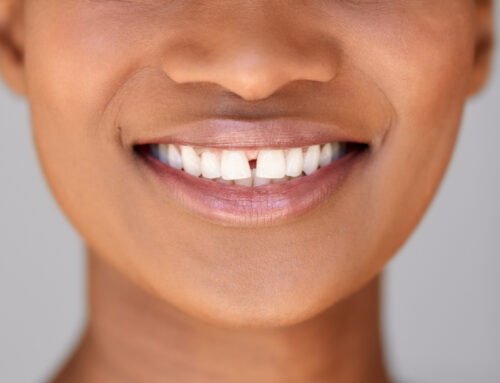As a parent, you’re happiest when you see your child smiling. They smile, you smile.
Now flash forward 20 years. And wipe that smile off your face because your child – now an adult – is no longer smiling. Your child is no longer happy. And your child is unhappy precisely because of her smile.
Let that sink in: Your child is unhappy because of her smile.
According to the American Association of Orthodontists (AAO), more than one-third of American adults are unhappy with their smiles.
As a parent, you can’t protect your child from every unhappiness, but thanks to the latest orthodontic treatments, like Invisalign, you can protect them from the unhappiness of a crooked smile.
Treatment with Invisalign, a sequence of clear aligners, is a popular, safe, and effective alternative to braces. Read on to find out how Invisalign can improve your child’s smile and set them up for a lifetime of happiness.

When to See an Orthodontist
Your child has been visiting the dentist for as long as her crooked smile has warmed your heart. But when is the best time to start straightening that smile?
The AAO recommends that all children visit an orthodontist by age 7 – or sooner if you notice any of the following problems:
- Teeth that are crowded or spaced widely or unevenly
- Protruding teeth
- Trouble biting, chewing, speaking, or closing the mouth
- Grinding or clenching teeth, clicking jaw, or other abnormal sounds
- Breathing through the mouth
- A habit of sucking the thumb or fingers
- A facial profile that appears unbalanced
Experienced, board-certified orthodontists, like Dr. James Barron and his team, can assess these problems and work with you and your child to find the best solution.
What Does Invisalign Fix?
For many children (and adults!), the Invisalign system is an ideal solution to their dental problems. These include crooked teeth, gaps in teeth, overbites, underbites, crossbites, and other misalignments in the mouth and jaw.
Because Invisalign is a fully customized, removable, and carefully sequenced treatment, it can begin addressing these issues early. In fact, early treatment – in children as young as six – can prevent these issues from worsening. It can also reduce the overall treatment time.
Your orthodontist will help you determine the best time to start treatment.
How Does Invisalign Work?
After an initial consultation, your orthodontist will use a state-of-the-art scanner to create a picture of your child’s mouth and design a series of 12-48 clear plastic aligners. These aligners are customized to your child’s mouth at each step of treatment. As your child’s smile gradually improves, your orthodontist will monitor its progress and guide you to replace each aligner with the next one in the sequence.
You can expect your child to wear each aligner – except when eating, brushing, and flossing – for about two weeks and visit the orthodontist every 8-10 weeks during Invisalign treatment.
Benefits of Invisalign vs. Braces
For many children and adults, Invisalign is a popular, safe, and effective alternative to braces. In fact, treatment with Invisalign offers several advantages over braces.
Comfort
Treatment with braces introduces sharp metal wires and other pieces that can poke and cut the soft tissues in the mouth. Treatment with Invisalign uses smooth plastic aligners that improve comfort and prevent soft tissue injuries.
Convenience
Besides discomfort, one of the most frequent complaints children with braces make is that they can no longer eat the foods they love. And let’s face it: So many of the foods that are braces “no-no’s” – popcorn, sticky, chewy, or hard candy, and crunchy cookies, to name a few – are also childhood favorites.
Invisalign solves this problem.
Invisalign’s plastic aligners are fully removable, so patients can still enjoy all of their favorite foods during treatment.
Appearance
Braces and Invisalign are both options to improve your child’s confidence in his smile. Because braces are so visible, however, they often temporarily diminish that confidence.
Again, Invisalign solves the problem. Designed with clear plastic, Invisalign treatment is not only more comfortable than metal braces but also less noticeable.
With Invisalign, you’ll watch your child’s confidence grow – even during treatment.
Treatment Time
As with braces, treatment time with Invisalign depends on the severity of the corrections. Most treatment plans range from six to 15 months. This is typically shorter than the treatment time for braces, which ranges from 16-24 months.
Plus, with Invisalign, you’ll start seeing the results much faster. Many patients report noticing a difference in their smiles within weeks.
Safety
Your child cares what she can eat or drink and how treatment might change her appearance. As a parent, though, one of your most important considerations is safety. Here, too, Invisalign has the edge.
First, the smooth plastic is more than an issue of cosmetics and comfort. It also protects the mouth from soft tissue injuries that can lead to infection.
Also, because your child can remove the aligners, she will be able to brush and floss her teeth normally. So, unlike with braces, food particles won’t get trapped against the teeth and gums. This reduces the risk for plaque buildup, cavities, damage to the enamel, and even gum disease.
Finally, some patients with braces experience allergic reactions to the nickel in the wires and brackets or the latex in the elastics. Again, Invisalign avoids these problems.
Cost
You’ve seen the benefits of Invisalign. But can you afford the Invisalign cost?
Fortunately, treatment costs for Invisalign are similar to the treatment costs for braces, and many insurance plans cover Invisalign treatment.
Deciding on Invisalign
Only you and your orthodontist can decide the best course of treatment for your child. In many cases, the advantages of Invisalign over braces are significant.
With Invisalign, as with all orthodontic treatments, regular dental hygiene practices are a key factor in achieving the kind of Invisalign “before and after” story you want. So keep brushing. Keep flossing. Keep visiting the dentist for regular checkups.
But if you want results, add one last item to your dental to-do list: Contact AHAVA Orthodontics for your free consultation today.




